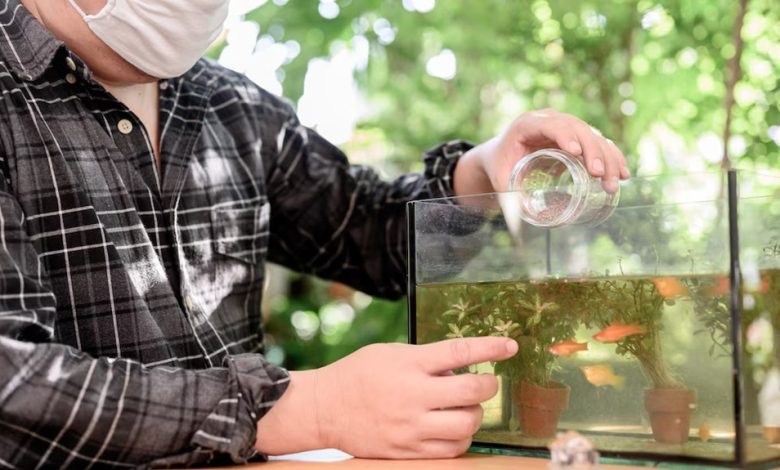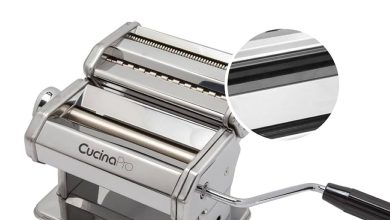How Often Should You Feed Your Aquarium Fish? A Comprehensive Guide

Keeping a vibrant and healthy aquarium is a rewarding experience. But, like any pet, fish require proper care, and feeding them correctly is crucial. One of the most common questions new aquarists have is, “How often should I feed my fish?” While the answer might seem straightforward, it actually depends on several factors. This comprehensive guide will delve into the intricacies of fish feeding, empowering you to provide optimal care for your aquatic companions.
General Guidelines
While there’s no one-size-fits-all answer, here’s a good starting point:
- Most adult fish: Once or twice a day.
- Young, growing fish: Three to five times a day.
- Herbivorous fish: Graze throughout the day, requiring small, frequent feedings.
Factors Influencing Feeding Frequency
To fine-tune your feeding schedule, consider these important factors:
- Type of Fish:
- Active Fish: Species like Danios and tetras have higher metabolisms and need more frequent feeding.
- Sedentary Fish: Larger, less active fish like goldfish and cichlids can go longer between meals.
- Herbivores vs. Carnivores: Herbivores, like plecos and mollies, require a constant supply of plant-based food, while carnivores, like bettas and Oscars, thrive on protein-rich meals.
- Age and Size:
- Fry: Newly hatched fish need frequent, small meals to support rapid growth.
- Juveniles: As fish grow, their metabolism slows down, and they require less frequent feeding.
- Adults: Mature fish generally need one or two meals per day.
- Food Type:
- Flake Food: A staple diet for many fish, it breaks down quickly and should be fed in small amounts.
- Pellet Food: When it comes to feeding bottom feeders, choosing a food that sinks slowly is essential, as it allows these fish to forage comfortably. This type of food ensures that bottom-dwelling species can access the nutrients without competition from surface feeders. Offering an amount they can consume within a few minutes helps prevent overfeeding and maintains water quality. Many aquarists find that sinking pellets or wafers are ideal for this purpose. Additionally, various discus varieties can thrive with this feeding method, benefiting from the slow release of nutrients as they graze at the bottom of the tank.
- Live Food: Highly nutritious and stimulating, but feed sparingly to avoid overfeeding.
- Frozen Food: A good alternative to live food, it offers variety and essential nutrients.
- Water Temperature:
- Warmer Water: Fish in warmer water have a faster metabolism and need more frequent feeding.
- Cooler Water: Fish in cooler water have a slower metabolism and require less food.
- Tank Size and Stocking Levels:
- Overcrowded Tanks: Competition for food increases, so ensure all fish get their share.
- Larger Tanks: Offer food in multiple locations to ensure even distribution.
Observing Your Fish: Key to Success
The best way to determine the ideal feeding frequency is to observe your fish.
- Active and Alert: If your fish are actively swimming and eagerly anticipating food, they are likely being fed appropriately.
- Lethargic and Uninterested in Food: This could indicate overfeeding or an underlying health issue.
- Excess Food on the Bottom: Reduce the amount of food offered per feeding.
- Cloudy Water: Overfeeding can lead to poor water quality, so adjust feeding amounts accordingly.
Establishing a Routine

Creating a consistent feeding routine helps your fish thrive.
- Morning and Evening Feedings: Mimic natural feeding patterns.
- Turn on Aquarium Lights: Ensure the lights have been on for at least 30 minutes before feeding.
- Observe Your Fish: Monitor their behavior during and after feeding.
- Remove Uneaten Food: Prevent water quality issues by removing any excess food after a few minutes.
Overfeeding: A Common Pitfall
Overfeeding is a common mistake that can harm your fish and your aquarium.
- Health Problems: Obesity, fatty liver disease, and swim bladder issues can arise from overfeeding.
- Water Quality Issues: Excess food decomposes, leading to ammonia spikes, cloudy water, and algae growth.
Fasting: A Healthy Practice
Consider incorporating fasting days into your fish’s routine.
- Once or Twice a Week: Allows fish to clear their digestive systems.
- Benefits: Improves digestion, reduces waste production, and can help prevent overfeeding.
Visual Appeal: Enhancing Your Aquarium
Feeding time can be a visually appealing experience.
- Variety of Foods: Offer different colors and textures to stimulate your fish’s interest.
- Feeding Rings: Concentrate food in a specific area, making it easier to observe your fish.
- Live Plants: Provide natural grazing opportunities for herbivorous fish.
Conclusion
Feeding your aquarium fish correctly is vital for their health and well-being. By considering the factors outlined in this guide and observing your fish’s behavior, you can establish an optimal feeding routine. Remember to avoid overfeeding, incorporate fasting days, and enjoy the captivating sight of your fish thriving in their underwater world. For more tips on fish care, be sure to check out Aquariumfishblog for valuable insights!


